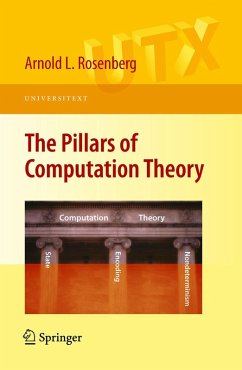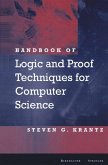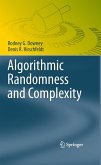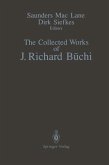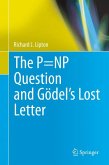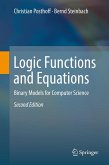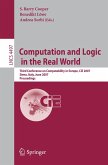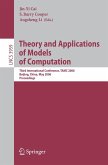This book strives to endow upper-level undergraduate students and lower-level graduate students with the conceptual and manipulative tools necessary to make Computation theory part of their professional lives. The author tries to achieve this goal via three stratagems that set this book apart from most other texts on the subject.
(1) The author develops the necessary mathematical concepts and tools from their simplest instances, so that the student has the opportunity to gain operational control over the necessary mathematics.
(2) He organizes the development of the theory around the three "pillars" that give the book its name, so that the student sees computational topics that have the same intellectual origins developed in physical proximity to one another.
(3) He strives to illustrate the "big ideas" that computation theory is built upon with applications of these ideas within "practical" domains that the students have seen elsewhere in their courses, in mathematics, in computer science, and in computer engineering.
Dieser Download kann aus rechtlichen Gründen nur mit Rechnungsadresse in A, B, BG, CY, CZ, D, DK, EW, E, FIN, F, GR, HR, H, IRL, I, LT, L, LR, M, NL, PL, P, R, S, SLO, SK ausgeliefert werden.
Hinweis: Dieser Artikel kann nur an eine deutsche Lieferadresse ausgeliefert werden.
"Rosenberg (Colorado State) charts another path by teaching the major themes that underlie all of computer science. He identifies three themes, or pillars: 'state,' 'encoding,' and 'nondeterminism.' ... This work is helpful for mathematically prepared undergraduates ... . Summing Up: Recommended. Upper-division undergraduates, graduate students, researchers, and faculty." (P. Cull, Choice, Vol. 47 (9), May, 2010)
"The author's intentions are clear from the very beginning: he wants to change the way computation theory is taught to undergraduates. ... The intended audience includes advanced undergraduates and beginning graduate students. ... student whose interests run to theoretical computer science, this would be a challenging and attractive book. ... For more typical students there are no exercises directly tied to the immediate text and few anywhere that are more routine - the kind of many students need to ground themselves in the subject." (William J. Satzer, The Mathematical Association of America, March, 2010)
"This authoritative, tightly woven book is unsurpassed as the definitive computation theory text and reference ... it has my highest recommendation." (George Hacken, ACM Computing Reviews, August, 2010)

